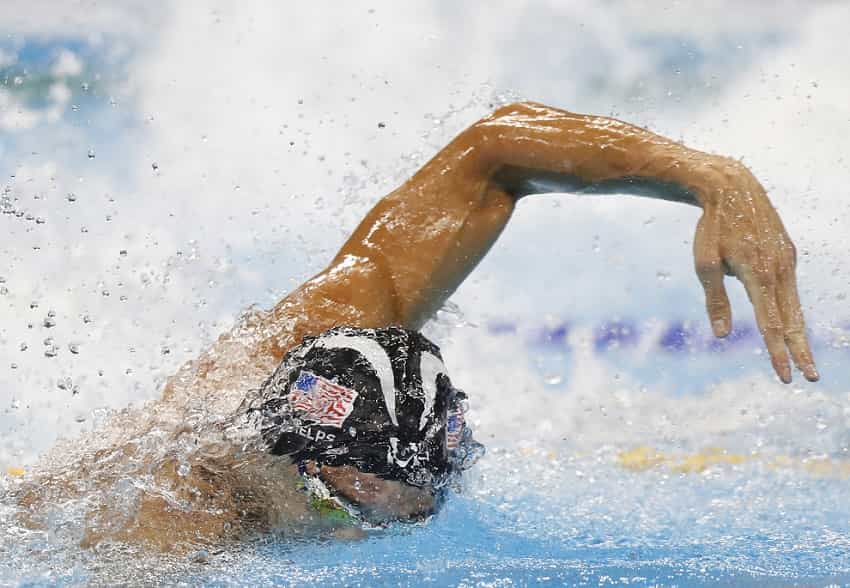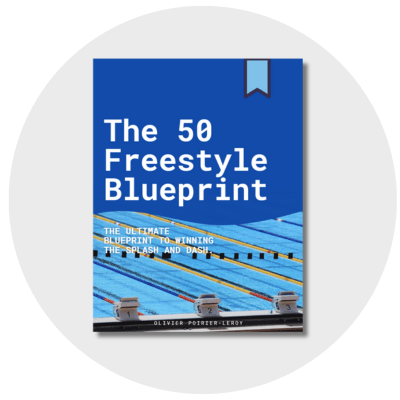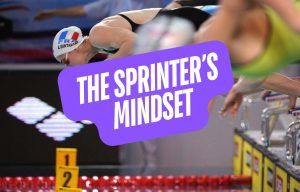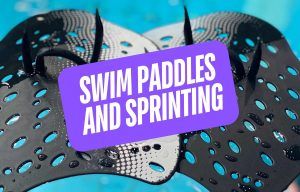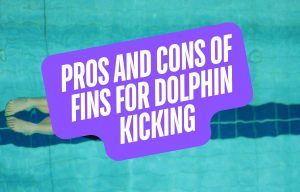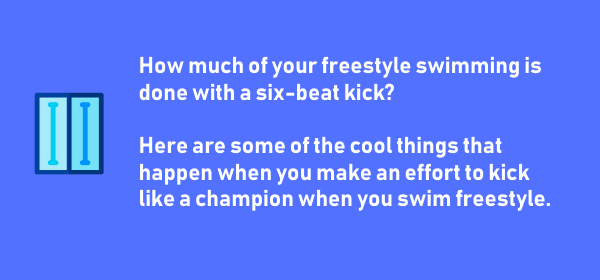
We all know Michael Phelps as a world-crushing butterflier, but his freestyle was epic in its own right.
And perhaps the most impressive thing about his freestyle was the range.
He could swim an elite 100m freestyle.
Phelps broke the 100m freestyle American record leading off the 4×100 free relay in Beijing. At the 2016 Rio Olympics, Phelps’s leg (and the booming underwater dolphin kicks off his turn) was the difference that sent the Americans to gold.
He twice thumped the world record in the 200m freestyle. The latter performance, done in Beijing, was one of his most dominant swims during the Great Haul of China.
Phelps also had the endurance to close the 400m individual medley with a crushing freestyle leg.
Developing the kind of freestyle that could compete in the 100 events and close the 400m individual medley took a lot of work, and one of the steps along the way was learning to train with a 6-beat kick.
Six-beat or bust
As a youngster, Phelps would use a booming kick during fast efforts, and his long-time coach, Bob Bowman, saw an opportunity to punch the supercharger on Phelps’s freestyle.
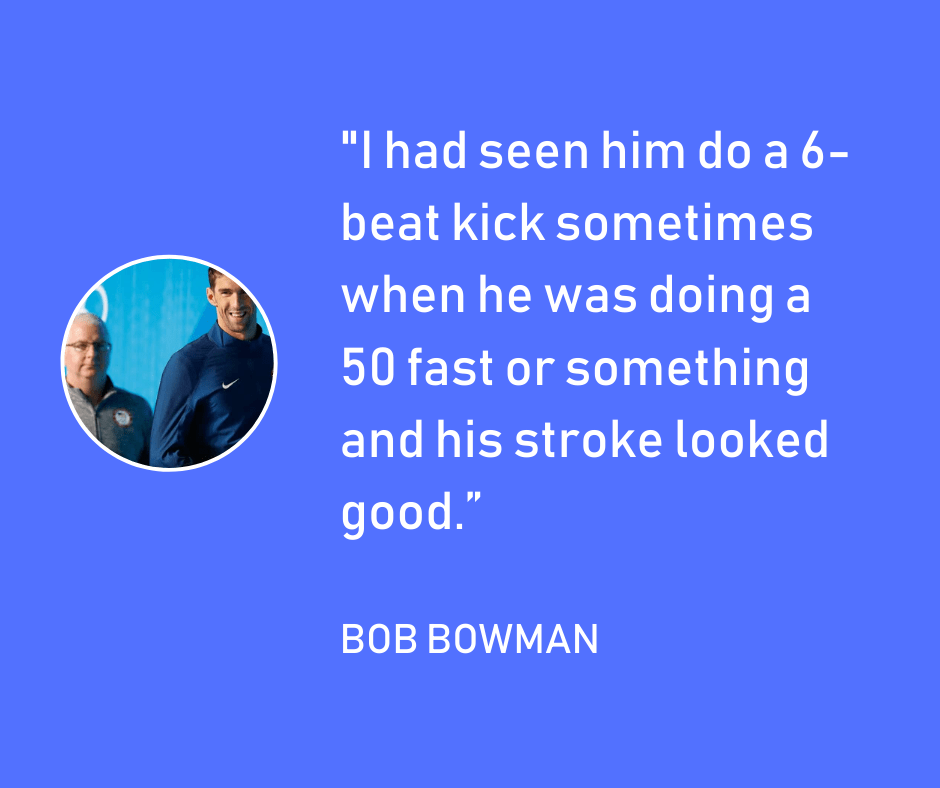
After a few false starts on getting Phelps to train more frequently with a six-beat kick, Bowman laid down the law: If Phelps didn’t swim freestyle with a six-beat kick, he was out of practice. Gone. Out.
It took some time for Phelps to get used to it. And he got kicked out of practice a bunch.
First he could hold the six-beat kick for a few hundred meters. Then a couple thousand meters. Six-thousand meters. And finally, after a week or so, he was able to do the full practice swimming with a six-beat kick.
It didn’t take long for Phelps’s freestyle to explode.
“From then on out he did a six-beat kick and his training took a quantum leap,” said Bowman. “His performance in the meets, therefore, took a quantum leap forward.”
Bowman recognized that this adaptation helped Phelps appreciate the windfall of improvement that came from tackling and conquering something that was hard.
“I thought that was the single most important thing that we did teaching-wise with him,” said Bowman. “It showed him that making a technical change, even though it might be difficult, had a big effect.”
How will six-beat kicking help me swim faster?
Alright, cool beans—Michael Phelps could six-beat kick.
But he’s the GOAT.
How does six-beat kicking help the rest of us swimmers, who perhaps have slightly more modest goals in the pool than becoming the most winningest Olympian of all time?
Well, there are a few reasons you should give it a look:
Your swim-specific conditioning will go through the roof.
Swimming with a six-beat kick is not easy.
If you have skated by with a one or two beat kick for a majority of your swim workouts, injecting your training with six-beat kick will be humbling.
The red-face, the huffing, the puffing—it’s all coming your way.
Get ready to drink it in. But it will be worth it.
Swimming with a six-beat kick is conditioning work for champions. Get after it.
Swimming with a six-beat kick sorts out some body position issues.
A consistent kick is a consistent check on your body position.
If your rear-end is cork-screwing, a six-beat kick will let you know. A six-beat kick keeps you honest about your legs and hips flopping around behind you.
Less criss-crossey legs means that you have a straighter and more balanced body position in the water, shaving off unnecessary drag.
Perfect for the fast kicker who doesn’t swim fast.
Fast swimmers are usually fast kickers. But fast kickers aren’t always fast swimmers.
And the reason is because there is a marked difference between kicking on a kick-board, and the stability it provides, compared to the stability and focus on body position that is required to kick fast while also pulling and rotating like a champ.
Over the years I have seen plenty of swimmers who were specialists in kick or pull but had a hard time carrying over that prowess over to their swimming.
Six-beat kicking takes the leg conditioning you’ve earned from kicking on a board and puts it to the test while you are swimming.
Being able to kick a 50 in :30 is fantastical, but if you struggle to coordinate your arms and legs properly (and efficiently!) when swimming, that fast kick ends up being a fun factoid instead of a fast swim time.
A six-beat kick lengthens your stroke.
One of the things you will notice when you are kicking six-beat is that your stroke will lengthen.
Compared to a two-beat kick, where your legs provide basically no propulsion and your strokes become shorter and choppier, a six-beat kick promotes a longer extension of the arm stroke.
You start to kick through and into the catch.
A six-beat kick gives you options.
Now, I can hear the objections beginning to percolate. My kick sucks. I’m a distance swimmer. I don’t race with a six-beat kick.
Becoming proficient with a six-beat kick gives you the option of having it.
- If you race with a 2 or 4 beat kick, training with a six-beat kick will make that two-beat kick feel like a piece of cake.
- If you are racing a 800, and you need to turn on the jets on the last 50 to try and catch the swimmer next to you, that 2-beat kick is unlikely to get the job done.
- If you race a variety of events, training with a six-beat kick gives you the confidence to know that you can adjust tempo and speed as necessary.
Ultimately, a six-beat kick is a tool for your swimming.
Training with it is a new form of challenge in the water, it’s extraordinarily specific conditioning, and it teaches you the ability to change stroke tempo.
Getting started with six-beat kicking
Want to spice up your swimming workouts with some more six-beat kicking?
Here are a couple ideas for introducing it to your swimming.
Try six-beat kicking when doing drill.
Catch-up freestyle is a commonly used freestyle drill, but a drill that swimmers often do slowly and with a lazy kick. Shorten the distance, and work this drill with a six-beat kick.
Another classic free drill is the old 1 stroke, 6 kick drill. Six-beat kicking while doing drill gives you a step towards the real thing.
Progress into it.
Instead of hopping in the water and doing 30x100s with a six-beat kick, or trying to do a 1,500m straight with a rooster tail of white water behind you, work your way into it.
Here’s a simple progression of how this could look:
2-3 rounds…
- 8×25 free with six-beat kick @:45
- 4×50 free with six-beat kick @1:10
- 8×25 free with six-beat kick @:40
- 2×100 free with six-beat kick @1:50
- 8×25 free with six-beat kick @:35
- 1×200 free with six-beat kick @3:30
- Extra minute rest
Here is a more advanced swim practice that targets six-beat kicking that I did recently:
The Ultimate Guide to Sprint Freestyle
Want to learn exactly what it takes to sprint at an elite level? The 50 Freestyle Blueprint is a detailed and evidence-based guide that will show you everything you need to know—step-by-step—how do develop an elite sprint freestyle.
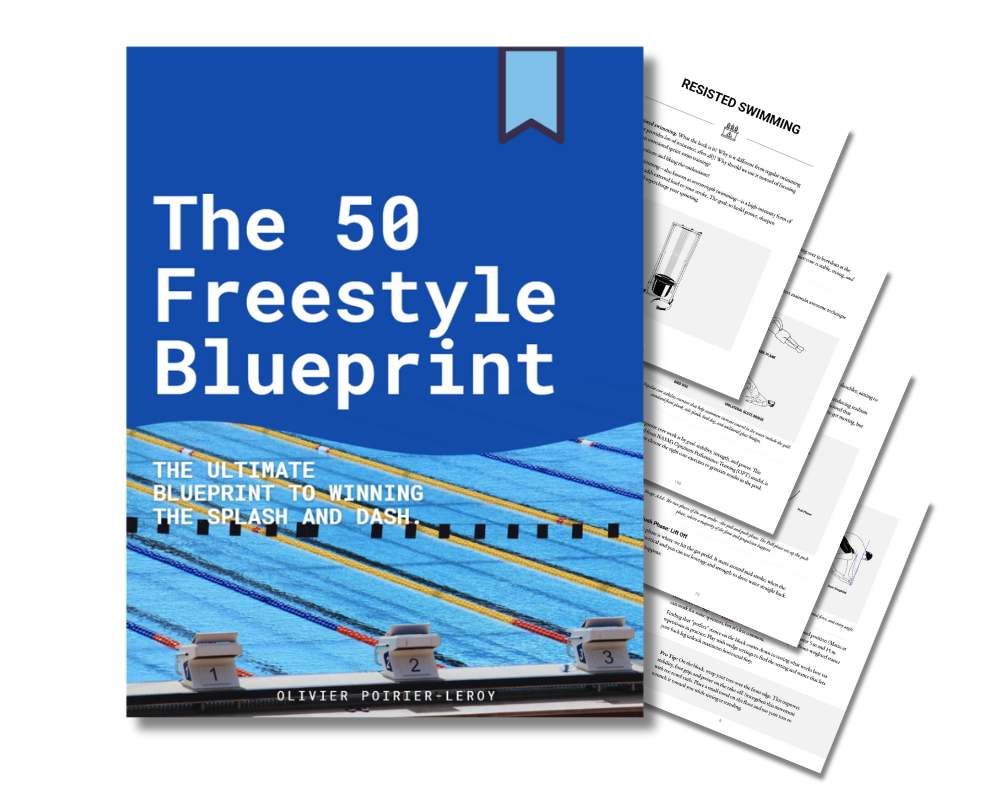
The 50 Freestyle Blueprint is a 220-page guide filled with actionable insights, research, and practical takeaways that you won’t find anywhere else. It covers everything from how to build an explosive start (the right way), mastering sprint technique (it’s much different than your regular freestyle stroke), and much, much more.
Learn more below about how The 50 Freestyle Blueprint will help you unlock blistering speed in the pool:

